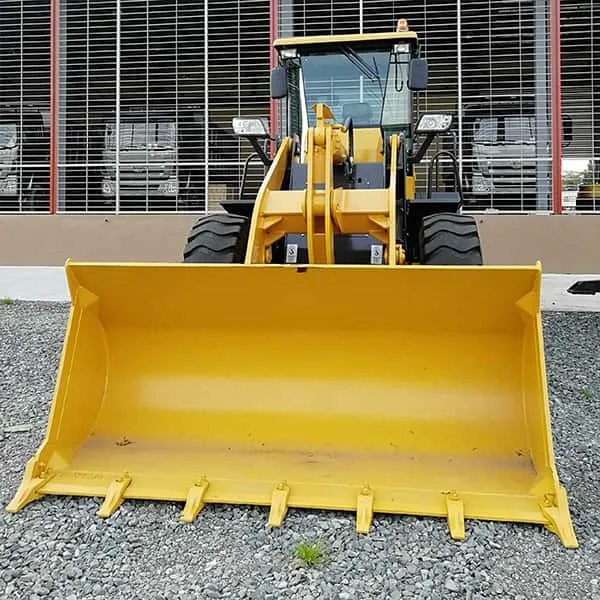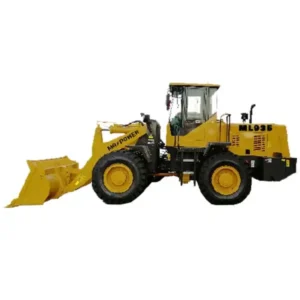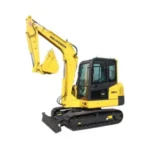Perkenalan
Wheel loaders are versatile and essential machines used in construction, mining, agriculture, and various other industries. Their ability to perform a wide range of tasks, from loading and unloading materials to transporting heavy loads, makes them invaluable on job sites. However, choosing the right wheel loader size is crucial for maximizing efficiency and productivity. In this comprehensive guide, we will explore everything you need to know about wheel loader sizes, their importance, applications, and how to select the right size for your specific needs. By the end of this article, you will have a thorough understanding of wheel loader sizes and their impact on operational success.
Understanding Wheel Loader Sizes

Wheel loader sizes are determined by several factors, including engine power, operating weight, bucket capacity, and dimensions. These factors collectively define the machine’s capabilities and suitability for different tasks. Let’s delve into the key aspects that define wheel loader sizes:
Engine Power
Engine power, measured in horsepower (HP), is a critical determinant of a wheel loader’s performance. It affects the machine’s ability to lift heavy loads, operate efficiently under varying conditions, and perform continuous operations without overheating.
Bobot Kerja
Operating weight refers to the total weight of the wheel loader, including the cab, engine, wheels, and other components. A higher operating weight generally indicates a more robust and stable machine, capable of handling larger loads and tougher tasks.
Bucket Capacity
The bucket capacity, measured in cubic yards or cubic meters, indicates the volume of material the wheel loader can carry in a single load. Larger bucket capacities are suitable for tasks that require moving large volumes of material quickly.
Ukuran
The physical dimensions of a wheel loader, including its length, width, and height, determine its maneuverability and ability to access confined spaces. Compact wheel loaders are ideal for urban construction sites, while larger models are better suited for open areas and heavy-duty tasks.
Types of Wheel Loaders Based on Size
Wheel loaders are categorized into different types based on their sizes, each designed to meet specific operational requirements. Here, we will discuss the main categories of wheel loaders:
Compact Wheel Loaders
Compact wheel loaders are small, versatile machines designed for tasks that require maneuverability and precision. They are ideal for landscaping, small-scale construction, and agricultural applications. Despite their small size, compact wheel loaders offer impressive power and efficiency.
Mid-Sized Wheel Loaders
Mid-sized wheel loaders strike a balance between compactness and power. They are suitable for a wide range of tasks, including road construction, mining, and material handling. These loaders offer higher bucket capacities and engine power compared to compact models.
Wheel Loader Besar
Large wheel loaders are designed for heavy-duty tasks that require maximum power and efficiency. They are commonly used in mining, quarrying, and large-scale construction projects. These loaders feature high operating weights, large bucket capacities, and powerful engines.
Ultra-Large Wheel Loaders
Ultra-large wheel loaders are the giants of the wheel loader family, built for the most demanding tasks in mining and large construction projects. They offer unparalleled power, stability, and bucket capacities, making them indispensable for handling massive loads and tough materials.
Applications of Different Wheel Loader Sizes
The choice of wheel loader size depends on the specific requirements of the job site and the nature of the tasks to be performed. Here are some common applications for different wheel loader sizes:
Compact Wheel Loaders
- Landscaping: Compact wheel loaders are ideal for moving soil, mulch, and other landscaping materials.
- Urban Construction: Their small size allows them to navigate tight spaces in urban construction sites.
- Agriculture: These loaders are used for tasks such as feeding livestock, cleaning barns, and transporting hay.
Mid-Sized Wheel Loaders
- Road Construction: Mid-sized wheel loaders are used for tasks such as loading trucks with asphalt, gravel, and other materials.
- Mining: They are suitable for handling medium-sized loads of minerals and ores.
- Material Handling: These loaders are used in warehouses and industrial facilities for moving heavy materials.
Wheel Loader Besar
- Quarrying: Large wheel loaders are essential for moving large quantities of stone and aggregate in quarries.
- Large-Scale Construction: They are used for tasks such as moving earth, sand, and other construction materials on large sites.
- Mining: These loaders handle heavy loads of minerals and ores, improving efficiency in mining operations.
Ultra-Large Wheel Loaders
- Heavy Mining: Ultra-large wheel loaders are indispensable for handling the largest loads in mining operations, such as moving ore and overburden.
- Infrastructure Projects: They are used in massive infrastructure projects that require moving large volumes of materials quickly.
Factors to Consider When Choosing Wheel Loader Sizes
Selecting the right wheel loader size involves considering various factors to ensure optimal performance and efficiency. Here are some key factors to keep in mind:
Job Site Conditions
Evaluate the conditions of the job site, including terrain, space constraints, and material types. Compact wheel loaders are suitable for confined spaces, while larger loaders are better for open areas and heavy-duty tasks.
Material Density
Consider the density of the materials to be moved. Heavier materials require wheel loaders with higher engine power and bucket capacities.
Load and Cycle Times
Assess the required load and cycle times to determine the optimal bucket capacity and engine power. Faster cycle times improve productivity and efficiency.
Budget and Total Cost of Ownership
Factor in the initial purchase cost, maintenance, fuel consumption, and potential resale value to determine the total cost of ownership. Investing in the right size wheel loader can lead to long-term cost savings.
Brand and Model Reputation
Research different brands and models to find a wheel loader that offers reliability, durability, and excellent after-sales support. Reputable brands often provide better warranties and service options.
Comparison of Wheel Loader Sizes

To help you make an informed decision, we have compiled a comparison table of different wheel loader sizes, highlighting their key specifications and applications:
| Loader Size | Engine Power (HP) | Operating Weight (lbs) | Bucket Capacity (yd³) | Common Applications |
|---|---|---|---|---|
| Compact | 50 – 100 | 10,000 – 20,000 | 0.5 – 1.5 | Landscaping, Urban Construction, Agriculture |
| Mid-Sized | 100 – 200 | 20,000 – 40,000 | 1.5 – 3.0 | Road Construction, Mining, Material Handling |
| Besar | 200 – 400 | 40,000 – 80,000 | 3.0 – 6.0 | Quarrying, Large-Scale Construction, Mining |
| Ultra-Large | 400+ | 80,000+ | 6.0+ | Heavy Mining, Infrastructure Projects |
Kesimpulan: Wheel Loader Sizes
Choosing the right wheel loader size is crucial for maximizing efficiency and productivity on job sites. Understanding the different sizes, their applications, and the factors to consider when selecting a wheel loader can help you make an informed decision that meets your specific needs. Whether you require a compact loader for urban construction or an ultra-large loader for mining operations, the right choice will ensure optimal performance and long-term success.
Pertanyaan Umum
Q: What are the main factors to consider when choosing a wheel loader size?
The main factors to consider include job site conditions, material density, load and cycle times, budget, and the reputation of the brand and model.
Q: How do I determine the right bucket capacity for my wheel loader?
The right bucket capacity depends on the volume and density of the material to be moved, as well as the required load and cycle times for the job.
Q: What are the advantages of using compact wheel loaders?
Compact wheel loaders offer excellent maneuverability, making them ideal for confined spaces and tasks that require precision, such as landscaping and urban construction.
Q: Why are large and ultra-large wheel loaders used in mining?
Large and ultra-large wheel loaders provide the power, stability, and bucket capacity needed to handle massive loads of minerals and ores, improving efficiency in mining operations.
Q: How can I reduce the total cost of ownership for a wheel loader?
To reduce the total cost of ownership, choose a wheel loader that balances initial purchase cost, maintenance, fuel efficiency, and potential resale value. Investing in a reputable brand with good after-sales support can also help.
Q: Can wheel loader sizes impact operational safety?
Yes, choosing the appropriate wheel loader size can impact operational safety. Properly sized loaders ensure stability, reduce the risk of overloading, and enhance overall site safety.








-150x150.webp)
